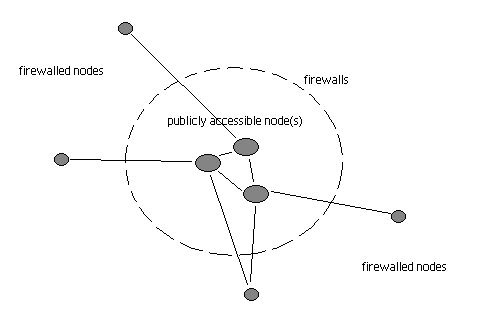
WASTE creates a network of hosts, making whatever connections possible, and typically routes traffic via the path of lowest latency (which effectively ends up as load-balancing, though it is far from ideal).
With at least one host outside of firewalls (or behind a firewall but having one incoming port open), a WASTE network can enable all supported services (including chat and file transfer) between any two hosts.
WASTE uses three main classes of messages: Broadcast messages, routed reply messages, and local management messages.
- Broadcast messages are sent from a host when the host wants to either notify or request information from all hosts on the network.
- Routed reply messages are sent in response to a broadcast message, routed back to the host that initially broadcast the request.
- Local management messages are sent directly between two nodes to negotiate link configuration parameters etc.
Each link on the network is secured and authenticated, but messages are not secured point to point, which means a trusted user on the network can theoretically spoof and/or sniff traffic. For more information, see the security page.